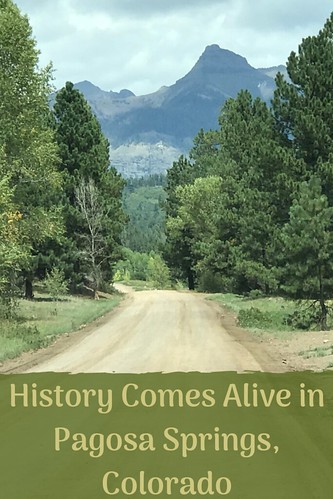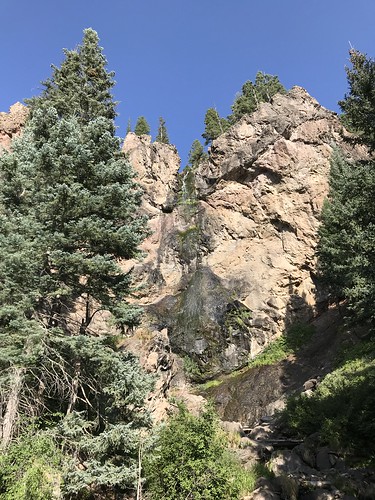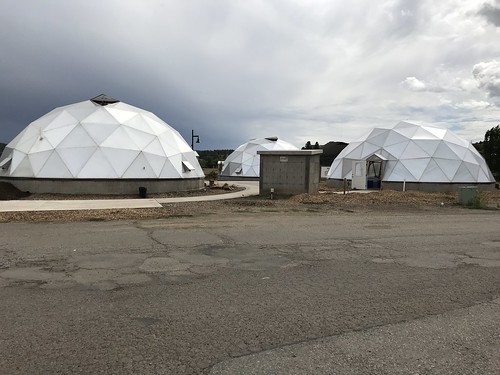History Comes Alive in Pagosa Springs, Colorado
While exploring Roman archeological sites in Europe and the Middle East, I learned about geothermal energy. Centuries ago, the Romans saw the value of this natural resource and used it for their benefit. For example, the Roman Baths, about an hour and a half train ride from London, were constructed in the 1st century C.E to utilize the thermal water with a temperature of 46 degrees Celsius or 115 degrees Fahrenheit.
During my recent road trip around the western part of Colorado, I was surprised to learn about the preponderance of hot springs that dot this region. Visitors to my home state can drive along a designated Hot Springs Loop to partake in the therapeutic tradition of using hot mineral water as a wellness treatment. These hot springs experiences vary from location to location, and trips can oftentimes be combined with attendance at local festivals and attractions.
To varying degrees, the towns in this region have been able to harvest this natural form of energy for multiple purposes. According to the Colorado Energy Office website, “Colorado’s geothermal resources are currently used for heat pumps, and directly for pools, spas, greenhouse agriculture, aquaculture, space heating, and district-wide heating.“
In Pagosa Springs, I was able to witness the history of geothermal energy come alive. The town with an elevation of 7,150 feet has the world’s deepest hot springs aquifer. Native Americans, who once lived in the vicinity, understood the healing powers of the mineral water and periodically fought for the rights to dominant the area so that they could partake in the “healing waters.” Pagosah is a Ute Indian term for healing waters.

For several decades, the Pagosa Springs’ government has operated a geothermal energy system that provides heat to local businesses and residential. The Department of Energy and Archuleta County worked together with the town to make this endeavor possible.
Pagosa Springs is a small town that has less than 6,000 households. More than half of its acreage falls within the San Juan National Forest. Outdoor adventure seekers are attracted to its scenic roads and trails for hikes, bike rides and horseback rides that take enthusiasts to lakes, rivers, and waterfalls. Fishermen can fish at mountain rivers, lakes and reservoirs. In the summer months, kayakers, rafters, and boaters take advantage of this resource. Others come for local culture, history, Native American culture or stop for an annual festival. People simply come for a hot springs experience.

A Disappointing trickle of water at Treasure Falls in late August
In Pagosa Springs, I was able to see a wide spectrum of geothermal energy uses when I dropped by The Springs Resort and Spa, Riff Raff Brewery, and the greenhouse domes operated by the Geothermal Greenhouse Partnership.
The Springs Resort and Spa
With a limited number of guest rooms with round the clock soaking access, most visitors opt to purchase a daily pass. Visitors can select from almost two-dozen pools filled with mineral rich water situated near the San Juan River. The temperatures in the pools are monitored and posted on a large board. A quick internet search revealed stories about the beneficial results of dipping in geothermal pools. From the number of people standing in line to enter the facility, it appears that the popularity of these experiences persists.

The Golden Pond, the main mineral pool, at The Springs Resort & Spa
Riff Raff Brewing Company
Since 2013, the Riff Raff Brewing Company restaurant has served guests in one of the oldest buildings in the town located at 274 Pagosa Street. The 1896 Victorian home that was originally built for a dentist has been renovated to accommodate the influx of patrons who enjoy this local brew as well as the menu items that are made with locally sourced ingredients.

The Riff Raff Brewing Company
On the restaurant’s website, the ownership prides itself with “Earth Powered Beer.” The founders of the restaurant chose to use the natural geothermal energy as a heat source in their brewing process. According to Peter Bartels, the diplomatic relations liaison and general manager, Riff Raff Brewery is the second brewery to accomplish this expensive feat. He’s hoping that the restaurant’s state of the art geothermal equipment will be cost effective over time.
My husband and I were escorted through a trap door that led to a ladder-like staircase into the basement to check out the geothermal heat exchanger that is the heart and soul of the process. Peter pointed out some of the intricacies of the impressive series of pipes and dials and casually mentioned that the building was also heated by geothermal energy like many of the nearby businesses. This energy efficient process uses the natural heat and not the mineral water. It is impressive to observe how this brewery utilizes one of Mother Nature’s resources.

The Riff Raff Brewing Company Geothermal Mechanical Room
Geothermal Greenhouse Partnership
Visitors traversing along the scenic riverwalk oftentimes peek inside the three domes that house this grassroots organization’s project. The Geothermal Greenhouse Partnership (GGP) has a mission to “educate the community in sustainable agricultural practices by producing food year-round using local renewable energy.” With their school partnerships they hope to empower local school children with a ‘can do” attitude. Their tagline is “growing food and community with geothermal energy.”

3 Domes. Photo: Geothermal Greenhouse Partnership
A dedicated group of “civic entrepreneurs” laid the groundwork for this project that has raised more than $850,000, mostly from Coloradoans. While this project that takes advantage of the geothermal microclimate continues to be a work in progress, three domed greenhouses have been erected for three distinct purposes—education, community garden, and innovation. Organizers are following their original plan and hope to have everything operational by the end of 2019.
In the first dome, preselected school classrooms and volunteers are growing crops that can either be used by the kids or donated to less fortunate members of the community. The school kids are also participating in cooking lessons that demonstrate how to use the fresh ingredients. By the end of the year, it is anticipated that the community garden will be operational. According to Sally High, the president of the GGP board, they have already accepted close to a dozen groups who will be given equitable spaces to grow their produce. The last dome will not be open to the elements and will provide an integrated environment that will focus on the latest agricultural developments.

Inside the Education Greenhouse
With the main emphasis on building out the remaining two exteriors and landscaping the exterior, the GGP has put a hold on their successful workshops. If your plans include a stop in Pagosa Springs, it might be wise to check the website to see if any workshops have been reinstated and if the timings have been expanded.
In the spring, the GGP works with the Colorado Environmental Film festival to bring a festival to Pagosa Springs. In the fall the GGP hosts a special breakfast during the ColorFest weekend. Participants are treated to a gourmet breakfast with mimosas as they watch the balloon watch from a prime location. Both draw crowds to this small town.

Photo: Geothermal Greenhouse Partnership
Historic Points of Interest
History lovers can pick up a map at the Pagosa Visitor Center and take a self-guided tour of historic structures that tell part of town’s story. Many start at Goodman’s Department Store, established in 1900, the oldest business in town, and then head down Pagosa Street to Lewis Street. Additional information can be gathered at the small history museum that is open to the public from the middle of May until the middle of September. By happenstance, we dined at The Rose. On the restaurant’s walls, one can view a selection of black and white historic photos of the town.

Photos at The Rose

Goodman's Department Store
From ancient times to modern times, geothermal energy has helped communities stay warm and healthy while utilizing a natural resource. In Pagosa Springs, history comes alive via geothermal energy.

A waterfall at the end of the Piedra Falls Trail
Sandy Bornstein, the History Comes Alive Through Travel Editor for Wandering Educators, has visited more than 40 countries and lived as an international teacher in Bangalore, India. Sandy’s award-winning book, May This Be the Best Year of Your Life, is a resource for people contemplating an expat lifestyle and living outside their comfort zone. Sandy writes about Jewish culture and history, historical sites, family, intergenerational, and active midlife adventures highlighting land and water experiences.
Note: Visit Pagosa Springs sponsored Sandy Bornstein’s stop in Pagosa Springs. She received a two-night stay at the Fireside Inn Cabins.
All photos courtesy and copyright the Traveling Bornsteins, except where noted.



















